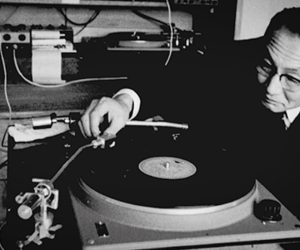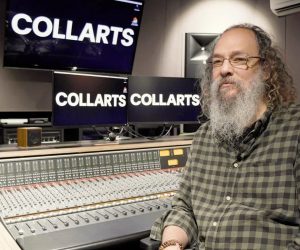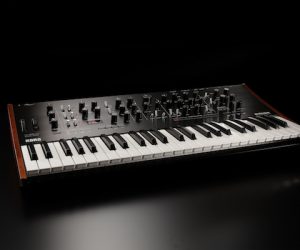
My Analogue DAW
The Suicide Swans decided to record their third album, ‘la Jungla’, differently – they used an ‘all analogue’ process but without all the analogue equipment. The album’s engineer Benjamin Lancaster tells us how they did it.

Artist: Suicide Swans
Album: La Jungla
Let’s back up a bit… Why bother going down the ‘all analogue’ road at all? For years I’ve been hearing comments from veteran engineers and producers saying that a major problem with the digital recording process is the inexhaustible choice it offers via virtually unlimited tracks, endlessly tweakable parameters, huge range of plug-ins, and extensive editing options.
“Why can’t these kids make a choice and stick to it?” they’d grumble, placing their coffee mugs on their $200,000 Neve consoles. Comments like this assume that without the limitations of vintage gear, all DAW-based engineers will automatically default to excessive production styles. The reality is that digital recording is the only way most of us can do our job; there isn’t another option. Most of us haven’t even been in the same room as a Studer A800, let alone operated one! After hearing this rhetoric over and over again, I resolved to record an album to DAW as if it were a completely analogue session, and mix it with the same limitations: 16 channels in, and no more than 24 tracks in the mix.
The band and I had a long discussion about our approach to this project. For a reference, we settled on Steve Albini’s stunning recording of Magnolia Electric Company’s ‘Josephine.’ This recording became our blueprint for the analogue process: live band, live vocals, 16 tracks and minimal overdubs. We vowed to commit to decisions made on-the-fly, and to stick to our guns come hell or high water!
THE JOYS OF LIMITATIONS
Over two winter days at the USQ Artworx Theatre, Toowoomba, we recorded our album, endeavouring to capture the essence of recording in the traditional analogue way. We gave ourselves a maximum of 24 tracks. Taking the necessary time to get the mics positioned as well as possible taught me a lot about defining the final sound before it hits the… erm, ‘tape’. Knowing there would be no amp modelling and that ‘fixing it in the mix’ would be extremely difficult if we had too much bleed from the drums, we took the time to be more present in crafting the soundstage at the source – a process I will forever continue to do.
The session got off to a good start, but, as with all good stories, there had to be a complication. Ours was the inclusion of an 18-minute song that Kyle Jenkins, the band’s front man, insisted on. We were trying to do something completely out of our realm, and there he was making it even harder! He couldn’t be talked down, so we battled on. If one person made a mistake, the band stopped and started again. This ultimately made for better takes, as the band ‘wanted’ it more after making a few errors. Being forced to start over made for a much more engaging experience; we all felt more connected to the music as we battled through the tribulations of making mistakes together.
The core of each song was recorded to 16 tracks, and we used the remaining eight tracks for overdubs. This meant we were forced to record all vocal harmonies as a group, using the Blumlein technique. That process was the hardest but also the most rewarding when I listened back to the takes — you really start to see what all the fuss is about when you capture five people singing in perfect harmony with each other. The violin, slide and vocal doubles filled up the remaining tracks, and we kept one track spare in case we needed to beef up a guitar part or add some ambient effects.
Why can’t these kids make a choice and stick to it?” they’d grumble, placing their coffee mugs on their $200,000 Neve consoles
DIGITAL BRAIN, ANALOGUE MIND
The ‘Analogue DAW’ (as I’ve christened it) was not much different than the average digital setup. My ‘tape machine’ consisted of two Apogee Ensembles linked together, providing 16 channels into Logic with no processing. My ‘console’ was a mixed bag of preamps including two API 512Cs, a Focusrite ISA428, a JLM NV500 and TG500, and a lunchbox of Neve 1073LBs. The onboard Apogee preamps covered the remaining channels.
I set up a 24×8 template in Logic to replicate a large format console, albeit with some custom mods. On the individual drum channels I stuck to Waves’ SSL G-Series channel strip plug-ins, and used a combination of Neve, Universal Audio, Pultec and API EQs and compressors for the rest of the tracks. For ambience I used Lexicon PCM reverbs and our lovely old Roland RE-201 Space Echo. I tried to live without Sound Toys’ Decapitator, but couldn’t — and I’m not sorry about that!
With the understanding that analogue studios don’t come with infinite outboard gear, I kept the plug-in count low and was careful not to use multiple iterations of the same plug-in; channel strip and common console EQs were the exception. I applied most of the compression to the auxiliary buses, and I was able to stick to only two or three ambient plug-ins plus the Space Echo per song.
All automation was done on an Avid Mix and printed to replicate the analogue process; I was lucky in this respect as the band’s ability to balance themselves as they played meant automation was minimal anyway. No time-based or pitched-based editing tools were used on any of the tracks. There really is no substitute for a good band, locked in together!
A NEW DAW-N
The ‘Analogue DAW’ process was indeed eye-opening. Making decisions on-the-fly and sticking to them is outside of our collective DAW comfort zones, but is a completely liberating experience; the mere act of trying something new moves us forward and forces us to learn and accept new ways of thinking. However, I’m adamant that the allure of using purely analogue gear is secondary to the feeling of being in the moment. Taking a risk and committing to a sound is a far more romantic concept than the equipment used. I suspect that what these analogue proponents are trying to convey when they speak so positively about analogue processes is not so much the gear itself but the joy and thrill of being decisive, critical and ultimately satisfied with the choices you make. It is exhilarating, and it transforms the recording process by creating high-stakes realism that you don’t get when you know you can fix it later.
I’m sure that when the analogue proponents of the world criticise the digital process, they are reacting against one of the worst of digital’s excesses — the over-production that comes with endless possibilities. If I’ve proved anything in my sessions with the Suicide Swans, it’s this: you absolutely don’t need a console and a tape-machine to experience a sense of immediacy and connection with the music you’re creating. That particular joy comes from the constraints we place on ourselves, not from the limitations of the equipment we use.
The digital recording process can lead down endless rabbit holes of options and revisions, but the solution isn’t to throw out all of digital’s advantages with its disadvantages. To do that smacks of analogue elitism. My advice? Set yourself some limitations to maintain your focus. And if you decide to use 36 CLA-1176 plug-ins on your mixes, f**k ‘em… you do you.
Benjamin Lancaster is a multi-instrumentalist, vocalist and engineer at By The Living Grace Studio in Brisbane, Queensland.











![DSC03515_[PRINT] DSC03515_[PRINT]](https://www.audiotechnology.com/wp-content/uploads/2019/10/DSC03515_PRINT-920x500.jpg)
![DSC03514_[PRINT] DSC03514_[PRINT]](https://www.audiotechnology.com/wp-content/uploads/2019/10/DSC03514_PRINT-920x500.jpg)
![IMG_3263_[PRINT] IMG_3263_[PRINT]](https://www.audiotechnology.com/wp-content/uploads/2019/10/IMG_3263_PRINT-920x500.jpg)














RESPONSES